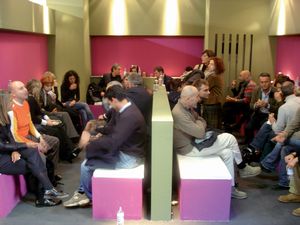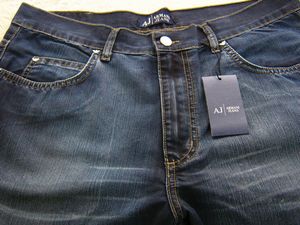For upsoming dance events keep an eye on: www.teatroverdifirenze.it
For more info on dance in Florence write to: danceon@danceconnectionone.it
Dance is entwined with the history and culture of different countries around the globe, and can communicate many different messages; it can mesmorize, entrance, seduce and entertain. The ‘Danza in Fiera’ held at the Fortezza da Basso was an excellent showcase of the world of dance, with performances of dances from classical ballet to belly dancing. It was a fantastic introduction to the upcoming events of dance and music that will be held throughout Florence over the coming months.
The ‘Danza in Fiera’ was also home to an elaborate display of dance costume. Throughout the centuries, interaction with different nationalities and cultures has changed and developed the forms of dance and its costumes, and in turn, they have had a huge impact on every day fashion and style.
Spectacular ballet performances from dance companies throughout Italy showcased an immense pool of talent, hardly surprising since Italy has been associated with ballet since its beginnings in the Renaissance. At the same time, trade and commerce expanded rapidly, and the dukes who ruled Florence and other Italian city-states grew in wealth. They competed with one another in giving extravagant entertainments, including dance performances. The dancers were not professionals, but noblemen of a duke’s court who danced to please their ruler. Catherine de’ Medici, a member of the ruling family of Florence, became Queen of France in 1547, where she introduced the same kind of entertainments that she had known in Italy.
In the early days of ballet, dancers wore long, heavy costumes, but as dancers became more skilled, they wanted attire that would not hide their steps or interfere with their movements. During the early 1700s, the great dancer Marie Camargo shortened her ballet skirt to above her ankles, and removed the heels from her dancing slippers. Ballet technique grew increasingly spectacular, and the skirts became shorter and shorter. Today, the standard ballet skirt, the tutu, ends well above the knees.
The Accademia Nazionale di Danza brought to the fair a fast-paced and exotic tango display. Tango, a dance originating in the bordellos of Argentina, was most likely brought to Europe by the young sons of wealthy Argentine families, who had learned it in their evenings of pleasure. It arrived in Paris in 1907, and was hugely debated because of its associations with prostitution, but as time went on, tango transformed conventions and heavily influenced fashion. Fashionable men began to have their dinner jackets cut in the long Argentine style known as ‘fumadero tango’ – allowing for more exercise of the arms and shoulders. To allow even more movement, some daring women wore divided skirts or ‘culottes’, which were described in 1911 by Paul Poiret, as ‘fashions for the future’.
The lasting association of tango is with dresses with slits designed to make the long strides easier, without revealing the movements of the dance itself. Jeanne Lanvin was famous for her take on the tango dress and, the word tango was often used in fashion advertising of the early twentieth century as a way of communicating that the garment was modern and functional for movement.
The fair lent even more of the exotic when Ivana Caffaratti led us to the souks and smoky clubs of the Middle East with her hypnotising belly dancing performance. A famed seduction routine, belly dance was used not only in entertainment, but was also a way for women to develop muscles that would help in child birth. Although the costumes worn by belly dancers are today revealing, they were once swathes of material that covered the entire body. Belly dance has long been associated with women entrancing and enticing men, and Ivana certainly worked her magic on the spectators.
Just as books such as ‘A Thousand and One Nights’ have contributed to the image of belly dancing, film has also played an important part in our associations and knowledge of dance. ‘Memoirs of a Geisha’ gave a glimpse into the world of the highly trained geisha, who perform numerous dances and train for hours to perfect each movement. Just as important to the geisha, are the elaborate kimono that they are carefully dressed in to perform their art. The year is divided into a set number of sections, each one having its own kimono. For example, during the season of cherry blossom, a geisha would be expected to wear kimono decorated with this pattern. A geisha house will own an entire collection of kimono, and their wealth is often judged by the amount and quality of these. Kimono can be worth a fortune and are highly prized.
From the crowds at the ‘Danza in Fiera’, it is clear that dance is a passion shared by many people, from those who enjoy dancing at a club on a Saturday night, to those who train to perfect their art. It influences our lives in so many ways, through the music associated with it, the fashion that it influences and the stories that it inspires. And this will continue for as long as we continue to dance.






